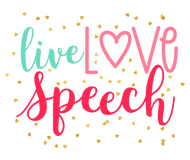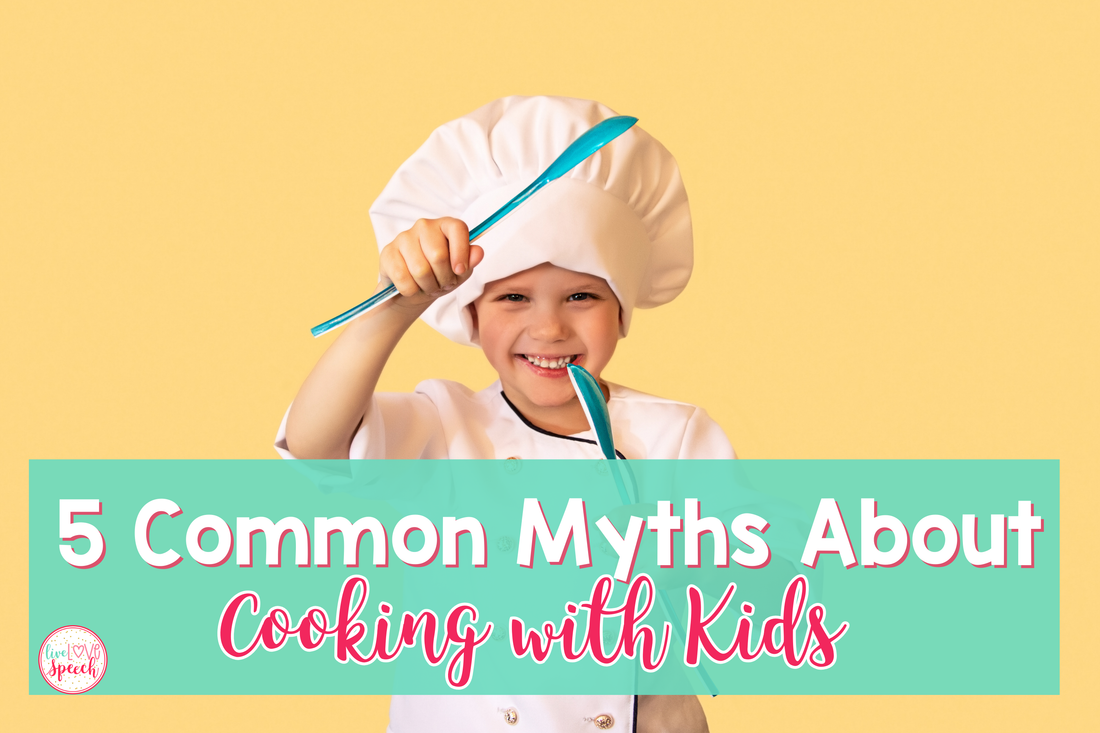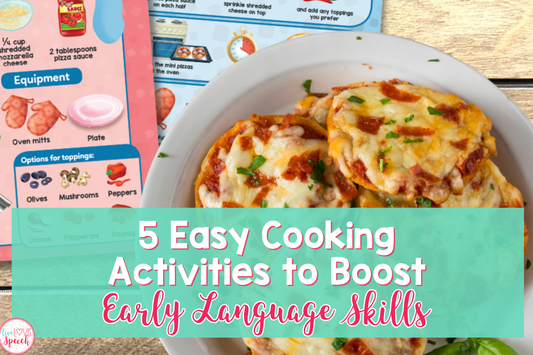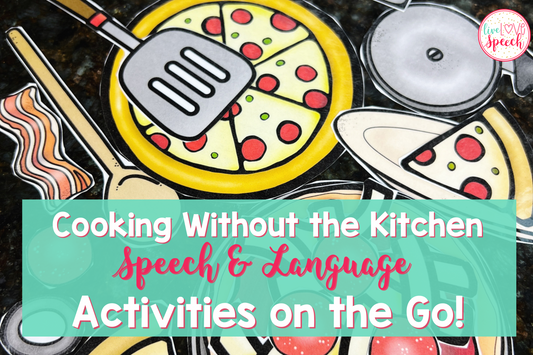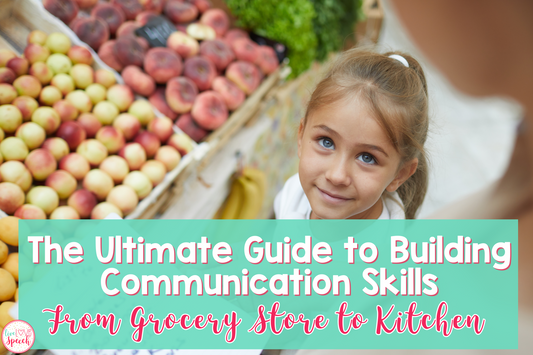
I know we've all been there when the kids ask to cook with you, or "help." You might have seen the cutest food craft online to share with your class, but you're worried... Worried about the mess, clean-up, etc. And I know firsthand that plenty of misconceptions hold people back from cooking with kids.
You are not alone.
I've heard them all! But as a speech therapist and a mom, I can tell you that cooking with kids is absolutely worth it.
There are so many cooking myths that make it seem overwhelming, but the truth is, with the right approach, it can be manageable, fun, and even educational. Cooking with kids isn’t about creating a picture-perfect dish but the experience, the learning, and the connection. Let’s break down some of these myths so you can feel confident bringing cooking into your home or classroom.
Myth 1: Cooking with Kids is Too Messy
The Truth: Yes, spills and splatters happen, but messes are part of the learning process. With a little preparation, you can minimize chaos:
- Lay out ingredients beforehand.
- Use easy-to-clean surfaces.
- Assign age-appropriate tasks, like stirring or measuring.
And here’s a tip, work as a team! Give each child a specific task so they feel included and responsible. Keeping a damp cloth nearby makes it easy to wipe up spills as you go. Teaching kids to clean up while cooking helps build responsibility and independence.
Myth 2: It Takes Too Much Time
The Truth: Cooking with kids doesn’t have to take forever! Simple recipes with just a few steps make it easy to include kids without taking up too much time.
- Choose quick, easy recipes with just a few steps.
- Prep some ingredients ahead of time if you’re short on time.
- Focus on the process, not perfection.
- Even small moments like spreading peanut butter on crackers create valuable opportunities for language development.
One example? Butterfly Pretzels! This super simple recipe uses just frosting, sprinkles, M&Ms, and pretzels. That’s it! And as a Pinterest fanatic, I know there are plenty of recipes with five or fewer ingredients and steps.
Myth 3: Kids Need Advanced Cooking Skills
- Let them dump pre-measured ingredients into a bowl.
- Give them a spoon to mix.
- Use larger, easier-to-handle ingredients like banana slices or mini crackers.
It’s all about breaking tasks down and letting kids take the lead where they can. One of the best ways to do this? Visual recipes!
Visual recipes use pictures to show each step, making it easier for kids to follow along. They give kids independence while also helping with sequencing, comprehension, and confidence in the kitchen.
We’ve been using visual recipes with Landon since he was little, and they’ve made such a difference! Instead of constantly asking, "What do I do next?" he can follow the pictures and feel in control of the process.
Myth 4: Cooking is Just for Older Kids
The Truth: Even toddlers can participate in simple, supervised tasks like dumping pre-measured ingredients or using their hands to mix. My May Visual Recipes make this even easier!
A great one to try? Smoothies! Kids can practice sequencing by adding ingredients like fruit, yogurt, and juice in a specific order and following simple steps. Plus, visual supports like picture-based recipes make it easier for younger kids to follow along:
- Use visual supports to break steps into manageable pieces.
- Encourage independence with tasks like scooping, spreading, and stirring.
Cooking is a fantastic way to introduce new vocabulary and practice following one-step directions, no matter the child’s age. With these visual recipes, kids not only learn how to follow directions but also get to practice new words like "scoop," "spread," and "layer." These actions help expand their vocabulary while building life skills that they'll carry with them for years to come.
Myth 5: Cooking Activities Aren’t Educational
The Truth: Cooking is a goldmine for building speech, language, and life skills! Kids can work on:
- Vocabulary (e.g., "mix," "stir," "slice").
- Sequencing ("What comes next?").
- Social skills like turn-taking and asking for help.
- Math concepts like counting and measuring.
With Visual Recipes, children not only follow simple steps but also expand their vocabulary and practice sequencing in a way that’s easy to understand. Additionally, activities like Snacks and Stories help reinforce these skills by combining food and storytelling, offering kids opportunities to work on language development while engaging in real-life tasks. For more information on snacks and stories check out my blog post 5 Ways to Turn Snack Time into Speech Time
A Quick Note About Allergies
I know allergies can be a concern, whether you’re in a classroom or at home. That’s why I’ve put together a FREE Allergy Guide to help make cooking accessible for everyone.
From simple swaps to blog suggestions that will keep you inspired, this guide has everything you need to create an inclusive, stress-free cooking experience. Click the image to grab your Freebie and start cooking with confidence!
Cooking with Kids
Don’t let these common cooking myths keep you from experiencing the joy of cooking with kids. Start small, embrace the mess, and watch the learning unfold!
Want some easy, no-fail recipes to try? Check out my May Visual Recipe Cards for engaging, step-by-step cooking activities that make learning fun!
For more ideas, tips, and resources, be sure to check out my other blog posts. Let's keep making learning enjoyable for both you and your child!

